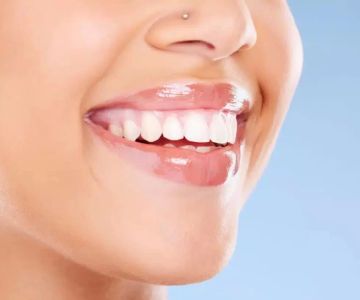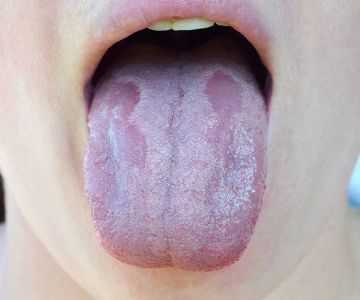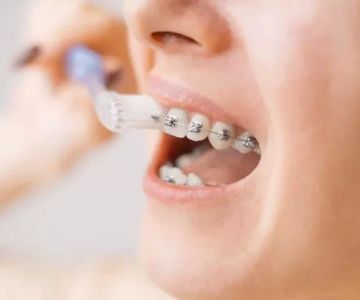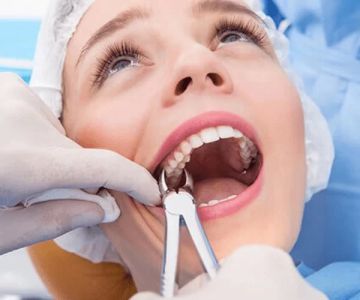How to Prevent Dental Cavities in Children with Braces
As a parent, ensuring that your child’s dental health remains in top shape during orthodontic treatment can feel like a challenge, especially when it comes to preventing dental cavities. Having braces can make the task of maintaining oral hygiene trickier, but it’s not impossible. In fact, with the right habits, your child can keep their teeth healthy and cavity-free throughout their time with braces. I’ve been through the experience with my own child, and I’m excited to share my insights and strategies on how to prevent cavities in children who wear braces.
1. The Challenge of Braces and Cavities
When your child gets braces, they’re embarking on a journey that will reshape their smile and improve their dental health. However, braces create new challenges. With brackets and wires placed on the teeth, food particles are more likely to get stuck, and plaque buildup can happen more easily. This is particularly concerning because plaque contains harmful bacteria that produce acids, which can lead to cavities. The difficulty of brushing around the brackets and wires also increases the likelihood of plaque buildup, which is why extra care and attention are needed to maintain good oral hygiene during orthodontic treatment.
2. Proper Brushing Technique: The First Line of Defense
One of the most important steps in preventing cavities while wearing braces is making sure your child brushes their teeth properly. Regular brushing is key, but the technique used must be thorough enough to clean around the brackets and wires. I remember when my child first got their braces, they struggled with reaching certain areas of their teeth, especially near the gum line. But with some practice, they learned the right technique, and it made all the difference.
Here are some helpful tips for brushing effectively:
- Use a soft-bristled toothbrush: Braces can be tough on the gums, so using a toothbrush with soft bristles is essential to avoid irritation.
- Brush after every meal: Make it a habit for your child to brush after each meal. This helps remove food particles stuck around the brackets and keeps plaque from forming.
- Brush for at least 2 minutes: Spend enough time brushing to ensure all surfaces of the teeth are clean, including around the brackets and wires.
By practicing this, your child can remove food and plaque effectively, minimizing the risk of cavities.
3. Flossing with Braces: Don’t Skip This Step
While brushing is essential, flossing plays an equally important role in preventing cavities, especially for kids with braces. Braces create spaces between the wires and teeth where food particles and plaque can easily get trapped. Even with regular brushing, it’s difficult to reach all areas without flossing.
There are several flossing tools designed specifically for people with braces. I found that using orthodontic flossers or floss threaders helped my child maneuver floss around the wires more easily. It can be tricky at first, but with consistent practice, it becomes second nature.
Here’s how to floss with braces:
- Use waxed floss: Waxed floss slides more easily between the brackets and wires without fraying.
- Consider a floss threader: This small tool helps guide the floss behind the wires, making the process much simpler.
- Floss between every tooth: Flossing once a day helps remove the food particles and plaque that brushing might miss.
Flossing will ensure that the areas around the braces stay plaque-free and reduce the risk of developing cavities.
4. Use an Antibacterial Mouthwash
In addition to brushing and flossing, using a good antibacterial mouthwash can provide extra protection against cavities. Mouthwash helps kill harmful bacteria that can lead to plaque buildup and tooth decay. My child was hesitant to use mouthwash at first, but once we found a mild, alcohol-free formula, they were able to incorporate it into their routine with ease.
Look for a mouthwash specifically formulated for children or one recommended by your dentist. Using mouthwash once or twice a day after brushing and flossing can give your child’s teeth an added layer of protection.
5. Encourage a Healthy Diet
What your child eats plays a significant role in preventing cavities. Some foods contribute to plaque buildup and decay, while others can help strengthen teeth and gums. I’ve learned over the years that when my child’s diet includes plenty of fresh fruits and vegetables, their overall dental health improves.
Here are some dietary tips to help prevent cavities:
- Limit sugary snacks and drinks: Sugary foods and drinks can cause cavities when they interact with plaque. Encourage your child to choose healthier options like fruits, vegetables, and whole grains.
- Provide calcium-rich foods: Foods like milk, cheese, and yogurt help strengthen teeth and bones, which is especially important during orthodontic treatment.
- Offer water over sugary drinks: Water helps rinse away food particles and bacteria in the mouth. Encourage your child to drink plenty of water throughout the day.
Maintaining a healthy diet will support your child’s oral hygiene routine and promote stronger teeth during orthodontic treatment.
6. Regular Visits to the Dentist
Finally, don’t forget the importance of regular visits to the dentist. Routine checkups and cleanings are essential for preventing cavities, especially with braces. During these visits, the dentist or orthodontist can assess your child’s dental health and provide professional cleaning to remove any plaque buildup that might have been missed during daily care.
In addition, the dentist can monitor the progress of your child’s braces, ensuring everything is on track and providing advice on maintaining a healthy mouth throughout the process. I found that our visits helped keep my child motivated to maintain proper oral care at home, especially when the dentist would praise their efforts.
Conclusion: Protecting Your Child’s Smile with Braces
Preventing dental cavities in children with braces requires dedication and proper care. By following the tips outlined above – including brushing and flossing effectively, using mouthwash, maintaining a healthy diet, and scheduling regular dental checkups – your child can enjoy the benefits of their braces without worrying about cavities.
Remember, the key to cavity prevention is consistency. Establishing good habits early on will help protect your child’s teeth and ensure their smile remains bright throughout their orthodontic journey.







 Westgate Dental Arts
Westgate Dental Arts Coventry Family Dental
Coventry Family Dental Familia Dental
Familia Dental Dr. Daniel S. Fife, DDS
Dr. Daniel S. Fife, DDS Dentistry At Suburban Square: Michael I. Wollock, DMD
Dentistry At Suburban Square: Michael I. Wollock, DMD Comfort Care Dental
Comfort Care Dental The Importance of Oral Health Education During Pregnancy for a Healthy Pregnancy
The Importance of Oral Health Education During Pregnancy for a Healthy Pregnancy Why Skipping Dental Checkups Can Lead to Bigger Oral Health Problems
Why Skipping Dental Checkups Can Lead to Bigger Oral Health Problems Advantages of Porcelain Dental Restorations
Advantages of Porcelain Dental Restorations Best Tips for Brushing Your Teeth Properly for Healthy Gums: Essential Techniques for Oral Health
Best Tips for Brushing Your Teeth Properly for Healthy Gums: Essential Techniques for Oral Health How Can Diabetes Cause Tooth and Gum Problems? Preventing and Managing Oral Health Issues
How Can Diabetes Cause Tooth and Gum Problems? Preventing and Managing Oral Health Issues Healthy Habits for Promoting Good Oral Health and Hygiene: Tips for a Healthy Smile
Healthy Habits for Promoting Good Oral Health and Hygiene: Tips for a Healthy Smile